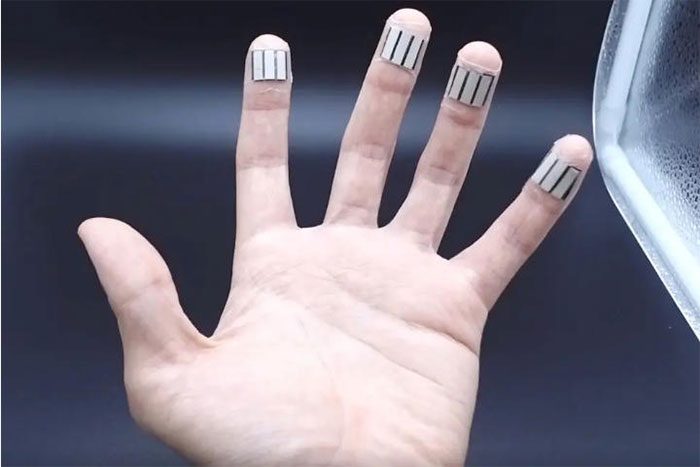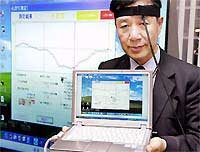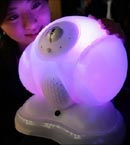Specifically, we will be able to power devices from microchips embedded on fingertips.
Engineers at the University of California, San Diego, recently discovered that a flexible, thin strip of microchips placed on the skin can generate enough electrical energy from the sweat of the wearer to power wearable devices and other types of equipment.
In addition to generating electricity from sweat, the biofuel cells (BFC) can also “harvest” energy from light taps of the fingers during activities like typing or playing the piano.

Fingertips are the perfect location to place microchip strips.
“We envision that this product could be used in any daily activity that involves touch, things that a person would typically do at home, in the office, while watching TV, or while eating” – said Joseph Wang, a professor of nanoengineering at Jacobs School of Engineering, University of California San Diego.
“Our goal is for this wearable device to operate naturally, so you don’t even have to think about it anymore“
When discussing the research, Professor Wang and his colleagues described it as the “holy grail” of energy harvesting because it does not rely on any external non-traditional energy sources, such as sunlight or motion.
Fingertips are the ideal location to place the microchip strips (as shown in the first image), as they are where sweat glands are most densely concentrated compared to anywhere else on the human body.
“The higher sweat secretion in the fingertips may be an evolutionary trait that helps us grip better” – co-author Lu Yin stated.
“The sweat rate on the fingertips can be as high as several microliters/cm²/minute. That’s a significant number compared to other areas of the body, where the rate can be 2 to 3 times lower“.
BFCs can produce 300 millijoules of energy/cm², a remarkable result that can be seen as a significant advancement over previous body energy harvesting methods that relied on physical activity or strong movement to generate substantial amounts of electricity.
In their experiments, the research team used this energy harvesting device to power a Vitamin C sensor system but asserted that it could also be refined to power other medical and fitness devices, like glucose monitors.
“We want this device to be more seamlessly integrated into wearable products, like gloves” – Lu Yin said.
“We also want to explore the possibility of creating wireless connections to mobile devices to maintain continuous sensing functions. There is a lot of exciting potential“





















































